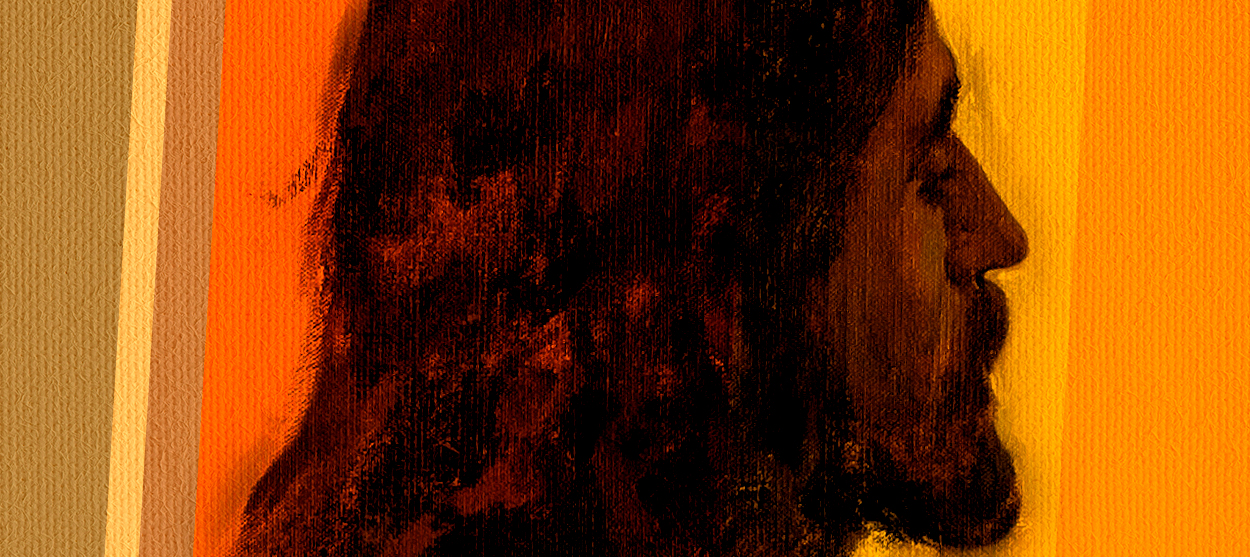The white Jesus debate is more complicated than you think
What an activist's call to destroy images of white Jesus got wrong


After the Confederate statues come down, activist Shaun King tweeted Monday, "the statues of the white European they claim is Jesus should also come down."
"They are a form of white supremacy," he said. "Tear them down." And tear down all the "murals and stained-glass windows of white Jesus, and his European mother, and their white friends," too, King added. If my napkin math — on the number of Christian congregations in America and the proportion of those whose buildings likely include whitewashed depictions of Jesus — is correct, King's iconoclasm amounts to a call to vandalize the majority of the houses of worship in the United States.
This is a damn fool idea. The political fallout should have been easy to foresee. A lawyer who works for the most powerful man on Earth took the opportunity to rank herself among the martyrs. Sen. Tom Cotton (R-Ark.) shared the story with what appeared to be a renewal of his call to use the military against looters. Major right-wing outlets reported the tweets under misleading headlines suggesting King hopes to destroy all Jesus imagery everywhere. That King received considerable pushback from left and Black Twitter did not typically make it into those accounts. That he has elsewhere made a more nuanced case for historical accuracy in depictions of Jesus — a case that didn't advocate wanton destruction — did not either. President Trump has already retweeted a prediction that King just won him a second term, which I suspect overstates King's reach but aptly characterizes the panic conservative, white Christians will feel on hearing from Tucker Carlson that "the mob" is openly planning to smash up all the churches, the beloved spaces in which we marry and mourn and teach our children truths and habits we hold dear.
The Week
Escape your echo chamber. Get the facts behind the news, plus analysis from multiple perspectives.

Sign up for The Week's Free Newsletters
From our morning news briefing to a weekly Good News Newsletter, get the best of The Week delivered directly to your inbox.
From our morning news briefing to a weekly Good News Newsletter, get the best of The Week delivered directly to your inbox.
But enough of the politics of this story. What I am more interested in is the religion, as I am a Christian and King, a former pastor, professes to be one as well. There is absolutely a needful critique of how "white Jesus" has been misused in church history, but that is not what King's viral pair of tweets offered.
There are two distinctions King failed to make which are vital for thinking about Christian depictions of Jesus (and especially depictions of Jesus with European features and skin tone). The first is that these depictions may be historically accurate or culturally familiar.
After his initial posts sparked controversy, King shared a well-known rendering of Jesus created by Popular Mechanics and informed by forensic anthropology of the Jewish people who lived in 1st-century Palestine. The result, of course, is not a white European, because Jesus wasn't white. "Jesus of Nazareth likely had a darker complexion than we [in the West tend to] imagine, not unlike the olive skin common among Middle Easterners today," wrote public theologian Christena Cleveland at Christianity Today in 2016. Accurate depictions of Jesus are good and should inform our faith, as Cleveland argued, reminding us that Jesus was poor and marginalized, a refugee, a subject of a brutal empire, and a victim of state violence.
Still, Cleveland also noted, "Christ the Lord transcends skin color and racial divisions." Christianity has never been a faith tied to a single culture, nation, or ethnicity. Though Christians have long disagreed on how our faith should interact with our cultures — and Lord knows we have many times handled this interaction poorly, maybe more often than not — the way Christianity can be contextualized is one of its great strengths. Our art reflects that contextualization.
A free daily email with the biggest news stories of the day – and the best features from TheWeek.com
"Every Christian culture has depicted Jesus, Mary, and the apostles as looking like them," said Catholic New York Times columnist Elizabeth Bruenig, a former contributor to The Week, in response to King's tweets. She's right: At 16th Street Baptist Church in Birmingham, Alabama, the site of the white supremacist bombing in 1963 that killed four young girls, a window installed after the attack shows a crucified Christ rendered in deep brown glass. (16th Street also has windows with a white Jesus. Would King have them torn down?) In the Irish Book of Kells, Jesus is a redhead. Italian Renaissance artists used local people as models for their paintings of Christ. In Ethiopian iconography, Jesus looks Ethiopian. In Haiti, Haitian. In China, Chinese. This, too, is good and should inform our faith, reminding us that Christ is our brother and God seeks to rescue lost sheep in every context, including equally our own and those very different from our own.
White Christians, like the master calligraphers behind the Book of Kells, are not excluded from this privilege of contextualization. But here we come to the second distinction, which is between depictions of a white Jesus for such devotional purposes and depictions of a Jesus whitened to cloak racialized oppression with a lie of divine approval.
"In the colonial period, Western Europe for the most part exported its image of a white Christ worldwide, and white Jesus often shaped the way Christians understood Jesus' ministry and mission," Cleveland explained. "Some 19th-century Christians, eager to justify the cruelties of slavery, went out of their way to present Jesus as white. By negating his true identity as a dark-skinned, oppressed minority, slaveholders were better able to justify the master-slave hierarchy and forget Jesus' ministry to set the oppressed free (Luke 4:18)." Jesus was also pressed into service of xenophobic and anti-Semitic causes in the 19th and 20th centuries, with "scientific racists" absurdly describing him as not merely white, but "Nordic."
The condemnation of this use of a whitened Jesus — in a generous reading which considers his more measured, off-Twitter writing on the subject — seems to be the point King sought to make. That is a point worth making. So would be an appeal to white Christians to be very careful in how we depict Jesus today, to consider that perhaps our particular faith context needs historical accuracy more than cultural familiarity.
But that is not what King said. He explicitly swept up every depiction of Jesus with European features and labeled them all tools of white supremacy to be destroyed. He envisioned shattered chapel windows and cathedrals defaced. He conflated images used to excuse un-Christlike evil with images that show a Christ like us to help us become more like Christ.
Want more essential commentary and analysis like this delivered straight to your inbox? Sign up for The Week's "Today's best articles" newsletter here.
Bonnie Kristian was a deputy editor and acting editor-in-chief of TheWeek.com. She is a columnist at Christianity Today and author of Untrustworthy: The Knowledge Crisis Breaking Our Brains, Polluting Our Politics, and Corrupting Christian Community (forthcoming 2022) and A Flexible Faith: Rethinking What It Means to Follow Jesus Today (2018). Her writing has also appeared at Time Magazine, CNN, USA Today, Newsweek, the Los Angeles Times, and The American Conservative, among other outlets.
-
 Bari Weiss’ ‘60 Minutes’ scandal is about more than one report
Bari Weiss’ ‘60 Minutes’ scandal is about more than one reportIN THE SPOTLIGHT By blocking an approved segment on a controversial prison holding US deportees in El Salvador, the editor-in-chief of CBS News has become the main story
-
 Has Zohran Mamdani shown the Democrats how to win again?
Has Zohran Mamdani shown the Democrats how to win again?Today’s Big Question New York City mayoral election touted as victory for left-wing populists but moderate centrist wins elsewhere present more complex path for Democratic Party
-
 Millions turn out for anti-Trump ‘No Kings’ rallies
Millions turn out for anti-Trump ‘No Kings’ ralliesSpeed Read An estimated 7 million people participated, 2 million more than at the first ‘No Kings’ protest in June
-
 Ghislaine Maxwell: angling for a Trump pardon
Ghislaine Maxwell: angling for a Trump pardonTalking Point Convicted sex trafficker's testimony could shed new light on president's links to Jeffrey Epstein
-
 The last words and final moments of 40 presidents
The last words and final moments of 40 presidentsThe Explainer Some are eloquent quotes worthy of the holders of the highest office in the nation, and others... aren't
-
 The JFK files: the truth at last?
The JFK files: the truth at last?In The Spotlight More than 64,000 previously classified documents relating the 1963 assassination of John F. Kennedy have been released by the Trump administration
-
 'Seriously, not literally': how should the world take Donald Trump?
'Seriously, not literally': how should the world take Donald Trump?Today's big question White House rhetoric and reality look likely to become increasingly blurred
-
 Will Trump's 'madman' strategy pay off?
Will Trump's 'madman' strategy pay off?Today's Big Question Incoming US president likes to seem unpredictable but, this time round, world leaders could be wise to his playbook



